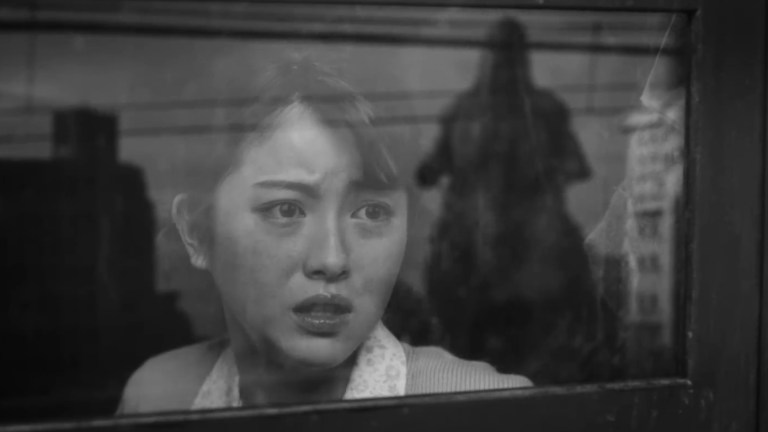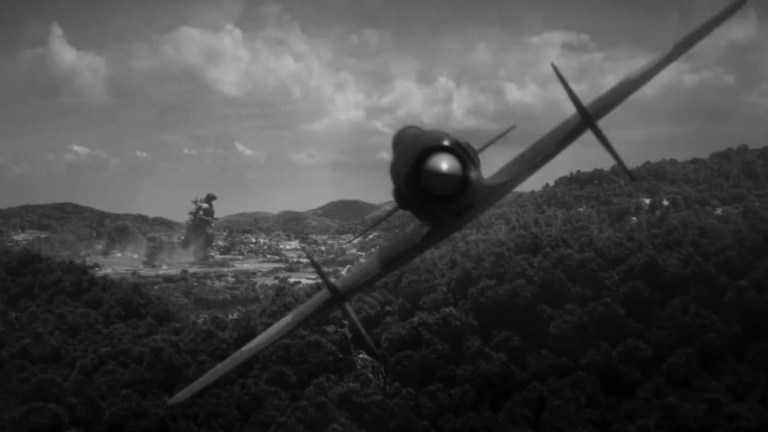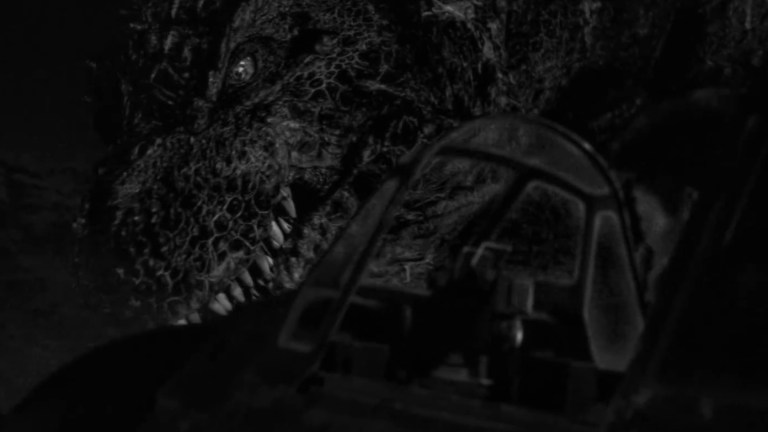‘Godzilla Minus One’ to End its U.S. Theatrical Run in Black and White, Here’s Why You Should See It Again
Godzilla Minus One/Minus Color promises a whole new experience for one of the best movies of 2023. Here’s why you should go see it one more time in theaters.

Table of Contents
Godzilla Minus One is something of a phenomenon. Not only is it a phenomenal movie (we ranked it quite highly in our rankings for 2023), but it has performed extremely well at the box office. And now, more than a month and a half after it was released in U.S. theaters, we’re getting a second version of the movie on the big screen: Godzilla Minus One/Minus Color.
Godzilla Minus One/Minus Color to Screen for One Week Only

Godzilla Minus One/Minus Color opens in U.S. theaters on January 26, 2024. It is currently scheduled to run for one week only. Godzilla Minus One needs to be seen on the biggest screen possible, so don’t miss out. Tickets are already on sale at tickets.godzilla.com. As of the announcement for Minus Color coming to U.S. screens, the color version of Godzillla Minus One is also still in about 600 theaters in the United States. So if you buy tickets for Minus Color early, make sure you’re getting tickets for the version you want.
Deadline reports that both the color and the black and white versions of Godzilla Minus One will end their U.S. theatrical runs on February 1, 2024. As of this writing, Godzilla Minus One is sitting at just over $95 million worldwide according to Box Office Mojo. With the United States being the biggest market for Godzilla Minus One and accounting for more box office dollars than every other territory combined, the black and white release could push Minus One to over $100 million worldwide.
Why Black and White?

Black-and-white re-releases have become a small but lingering trend over at least the past decade and a half. The 2008 home video release of The Mist included a black and white version that director Frank Darabont had envisioned while making the theatrically released color version. Since then other movies have gotten a similar black-and-white treatments, including Logan Noir (2017), Mad Max Fury Road: Black & Chrome (2016), Johnny Mnemonic: In Black & White (2022), Zack Snyder’s Justice League: Justice is Gray Edition (2022), and others. Some of these re-releases make more sense than others, and Godzilla Minus One/Minus Color might make the most sense of all.
The obvious answer to “why show Godzilla Minus One in black and white?” is that it gives the movie a classic look. Prior to Godzilla -1.0/C, only the first two Godzilla movies, Godzilla (1954) and Godzilla Raids Again (1955), were in black and white. Godzilla Minus One takes place between 1945 and 1947, which sets it before every other movie in the franchise. So, from a chronological standpoint, it makes sense to show Minus One in black and white since it is a period film set in a time when the vast majority of movies were still released in black and white.

Beyond the time period though, one of the main draws of Godzilla Minus One is that it has an appeal which echoes that of the 1954 original. The original presents Godzilla as a symbol of the atomic bomb, the devastation it wreaks, and the dangers of continued nuclear weapons testing. It focuses on the human element and the sacrifices people make to protect the world. Godzilla Minus One is similar in that it focuses on human stories with deep meaning, and it uses Godzilla as a symbol of what the movie’s characters are fighting against mentally and physically. Minus One also includes themes of sacrifice, but in a much different way. These connections make Godzilla (1954) and Godzilla Minus One feel like two sides of the same theme, and presenting Minus One in black and white brings those themes closer together.
Also, stripping the color away from the movie makes it less of an action spectacle. This doesn’t mean the color version of Minus One is all about action. It’s not. It’s about people and their stories. But Godzilla does look extremely awesome amid all the destruction. When Godzilla’s spine-spikes pop out and blue energy rises through its body for a blast of atomic breath, it looks super cool. Godzilla is scary at times too, but a black and white palette may make the monster even more imposing and ominous, like a gigantic shadow covering Japan and turning its cities into rubble. In other words, a black and white Godzilla has the potential to be a more terrifying version of the iconic kaiju.
Godzilla Minus One/Minus Color is Redone Specifically for Black and White

The black and white re-release of Godzilla Minus One isn’t something that was just slapped together. A statement from director Takashi Yamazaki previously published by Fangoria indicates that his team spent a long time adjusting the movie, cut by cut, into black and white. There are different advantages and disadvantages to color versus black and white, and you wouldn’t necessarily stage and shoot a movie the same way for both styles. So, doing something like turning the color setting on your television all the way down isn’t going to give you the same result as watching a movie that was shot with the intention of being in black and white. That’s why special care was taken for Godzilla Minus One/Minus Color.
As Takashi Yamazaki says in his statement, Godzilla Minus One/Minus Color isn’t just the color version made monochrome. Instead, his team worked “as if they were creating a new movie.” Yamazaki mentions that new textures and details were brought out in the meticulous conversion, so seeing this new version of the movie really does have the potential of being an entirely new experience. Part of that experience, as Yamazaki says, is a “new sense of reality” and a “frightening Godzilla.”
Do You Really Need a Reason to Revisit One of the Best Films of 2023?

If you’ve read this far, you probably don’t need much convincing to go see Godzilla Minus One/Minus Color. Godzilla fans are an enthusiastic bunch, and Minus One has rekindled a spirit of excitement in fans of all kinds. Many people online have bragged about seeing Minus One multiple times in theaters, and Minus Color is the best reason to see it at least one more time before it finally leaves theaters.
Godzilla Minus One is one of the best reviewed movies of 2023 from critics and fans alike according to many sources. Fans have their fingers crossed for the 2024 awards season, but even if the official accolades don’t go the way we hope, we know that Godzilla Minus One was one of the most exhilarating, exciting, and emotionally moving movie-going experiences of last year. And now, in 2024, it might be even better. Go see Godzilla Minus One/Minus Color in theaters beginning January 26, 2024.
